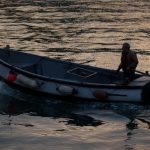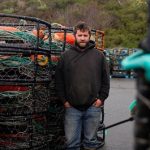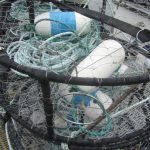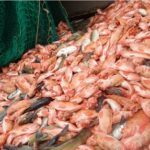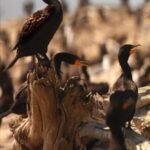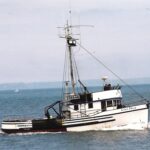Tag Archives: Northern shrimp
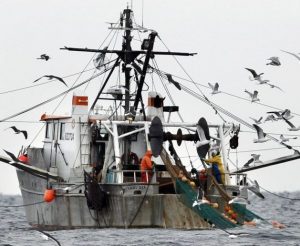
New England: Shrimpers hope industry lost to warm seas won’t be forgotten
Glen Libby looks back fondly on his days as a Maine shrimp trawler, but he’s concerned about what seafood lovers will think if the shuttered fishery ever reopens. “Shrimp? What are those?” he said. “There will be a market. But it depends how big of a market you’re talking about.” Maine’s historic shrimp industry has been closed since 2013 due to a loss in population of shrimp off of New England that is tied in large part to warming oceans. And with a reopening likely several years away — if it ever happens at all,,, >click to read<10:44
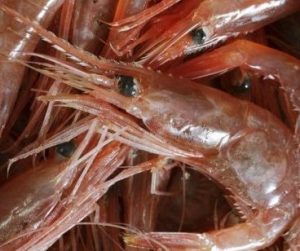
ASMFC block Northern shrimp harvesting for 3 more years
Citing continuing concerns that further fishing could drive the species to extinction, the Atlantic States Marine Fisheries Commission voted Friday to cancel not only the 2019 Maine shrimp season, but the 2020 and 2021 seasons as well. Commissioners from New Hampshire and Massachusetts supported the closure, while Patrick Keliher, commissioner of the Maine Department of Marine Resources, voted no, according to Tina Berger of the commission. DMR spokesman Jeff Nichols said in an email that Keliher would have supported a one-year moratorium. >click to read<17:59
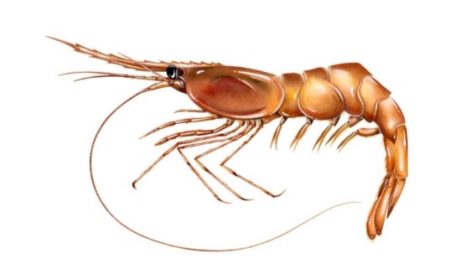
Northern Shrimp: Maine fishermen demand better science before canceling another shrimp season
Members of the Atlantic States Marine Fisheries Commission will meet Thursday in Portland to review the most recent stock assessment and make recommendations on whether Maine will see a shrimp season next year for the first time since 2013.“Spawning stock biomass and total abundance remain low, with little sign of recovery,” Toni Kerns, an ASMFC fishery management plans coordinator, wrote in an email about the shrimp population in the Gulf of Maine.,, But Maine’s shrimp fishermen, facing a sixth consecutive barren season, are calling the survey process by the ASMFC a “sham” and say the entire process to measure the recovery of Maine shrimp should be overhauled. >click to read<08:37

New England shrimp population still looks bad amid shutdown
A new analysis of New England’s shrimp population doesn’t bode well for the future of the long-shuttered fishery for the crustaceans. The Maine-based shrimp fishery has been shut down since 2013 because of concerns such as warming ocean temperatures and poor survival of young. Scientists working with the Atlantic States Marine Fisheries Commission are assessing the shrimp stock, and so far it looks like little has changed. Results of the stock assessment “look fairly similar to what we’ve seen in previous years,” said Megan Ware, a fishery management plan coordinator with the Atlantic States. >click to read<08:54

Disappearance of Daley Bros. another harbinger of bigger crisis facing N.L. fishery
April 20 was a difficult Friday for dozens of people working with Daley Brothers Ltd. in New Harbour. Their hopes of returning to work at the two seafood processing plants in the Trinity Bay community were abruptly dashed, after word spread that the company would not be reopening.,, Owner Terry Daley has refused interview requests, and has even rebuffed questions from Fisheries Minister Gerry Byrne, who’s trying to figure out if the closure is permanent, so he can activate government assistance for the displaced workers.,,, Another prominent company name in the industry is likely gone for good, much like P. Janes & Sons, Breakwater Seafoods and others. >click to read< 16:34
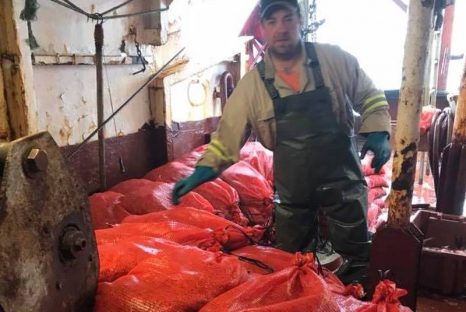
Phenomenal catch rates – Northern Peninsula harvesters and union rep calling for shrimp policy change
Shrimp harvesters across area 5-12 of the 4R zone are still seeing phenomenal catch rates. Many fishermen, including Jason Spence of Port au Choix, are now expecting to have their quotas caught by the end of May. “I got 314,000 pounds of shrimp to catch and I’m going to have that caught in four weeks,” said Spence. “That’s not something we’ve seen in six or seven years.” As reported in an initial Northern Pen story, Anchor Point harvester Roland Genge and others credit this success to a policy established by the fishers in the 4R region to not catch shrimp in April – despite the Department of Fisheries and Oceans (DFO) policy to open the fishery on April 1. >click to read<11:57
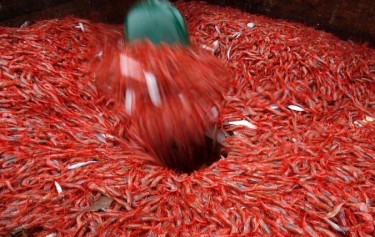
Lean year forecast for southern Labrador shellfish crews
Roy Mangrove is worried. After years of seeing cuts to his crab and shrimp quotas, the fisherman from St. Lewis in southern Labrador is facing a further 25 per cent cut in shrimp this season. That drops his quota to 61,000 lb. this year, from 82,000 last year. “Everything going good, you can make a bit of money on it, but for us we got … three trips of crab and one trip of shrimp. So four weeks and we’re finished,” Mangrove told CBC’s Labrador Morning this week. Mangrove and his crew fish in Shrimp Fishing Area 6. >click to read<12:03

Only room for one fleet; FISH-NL advises Ottawa to reserve northern shrimp in SFA 6 for the inshore
The Federation of Independent Sea Harvesters of Newfoundland and Labrador (FISH-NL) is calling for an immediate halt to the fishing of northern shrimp by factory-freezer trawlers in waters off Newfoundland’s northeast coast and southern Labrador until stocks rebound. In light of more scientific bad news today on the state of northern shrimp in that area, which is known as Shrimp Fishing Area (SFA) 6, FISH-NL calls on the federal government to reserve the limited quota solely for the inshore fleet, and ban fishing altogether when shrimp are spawning. Further, FISH-NL requests that Ottawa assign a quota of northern shrimp to the inshore fleet further north off Labrador in SFA 5. >click to read<17:43

Key northern shrimp stock off N.L. down again
Details of the latest northern shrimp stock assessment were released Friday with key Shrimp Fishing Area (SFA) 6 off the province’s northeast coast looking pretty grim. Fishable biomass is down 16 per cent and spawning stock biomass is down 19 per cent in SFA 6, thus leaving shrimp in that area in the critical zone of the precautionary approach framework employed by Department of Fisheries and Oceans (DFO) science. That will likely translate into another drop in the Total Allowable Catch (TAC) for the area,,, >click to read< 16:34
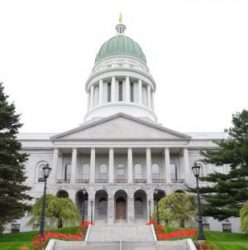
Maine: Bills to address commercial license glitches
The Legislature’s Joint Committee on Marine Resources will meet next Wednesday for hearings on three bills aimed at fine-tuning the state’s commercial fishing license system. One bill, LD1652, would allow the Department of Marine Resources to set up a limited entry system for shrimp fishermen in any year when the Atlantic States Marine Fisheries Commission sets the state’s northern shrimp landings allocation at less than 2,000 metric tons. Currently there is a moratorium on shrimp fishing in the Gulf of Maine.,,, The two other bills are more technical. click here to read the story 11:24

DMR extends search for shrimp boat for 2018 Northern Shrimp Cooperative Winter Sampling program
The Department of Marine Resources extended the deadline and sweetened the deal in the hope of attracting applications to participate in its 2018 Northern Shrimp Cooperative Winter Sampling program. DMR was offering up to $2,500 in pay for a shrimp trawler to collect shrimp samples off the Midcoast, starting about Jan. 29. The purpose of the program is solely to collect scientific samples for DMR. No shrimp may be kept or sold. Last week, DMR announced that it was upping the ante to $3,450 in an effort to attract some interest and extended the deadline to Wednesday, Jan. 3. click here to read the story 11:55

It’s Maine Shrimp Season, Without the Shrimp
Sitting between Glen Libby’s desk at Port Clyde Fresh Catch and the armchair where his brother’s old dog, Red, likes to nap are two boxes full of “The Original Maine Shrimp Cookbook.” This slim spiral-bound volume includes contributions from various members of the brothers’ immediate family, whose shrimping history dates back nearly four decades in this coastal town about two hours northeast of Portland. Mr. Libby loves the small, delicate Northern shrimp, known fondly here as Maine shrimp, and so do customers at his processing and distribution plant. Photo’s, click here to read the story 22:12

Shrimp stir up spat at commission meeting
For such tiny critters, northern shrimp can kick up quite a storm among fisheries regulators. Meeting in Portland last week, the Atlantic States Marine Fisheries Commission’s Northern Shrimp Section voted to continue the moratorium on shrimp fishing in the Gulf of Maine for another year. First imposed in 2013, the moratorium will remain in force for at least one more year. In an email, Department of Marine Resources spokesman Jeff Nichols said Commissioner Patrick Keliher “was very disappointed” with the proposal and voted against the research set-aside. click here to read the story 11:18

Northern Shrimp – If shrimp fishery reopens, Maine to get lion’s share
The Gulf of Maine, closed since 2014 to shrimp fishermen, will operate under strict state allocations when and if it ever reopens to shrimping. The Atlantic States Marine Fishery Commission, which regulates the fishing for northern shrimp in the region, approved the new amendment that allocates 80 percent of the total allowable catch to Maine, with Massachusetts and New Hampshire each receiving 10 percent. “This the final action and it’s now in place for when the resource recovers,” Tina Berger, ASMFC spokeswoman, said Thursday.The action, known as Amendment 3, click here to read the story 08:19
Northern Shrimp plan changes advance
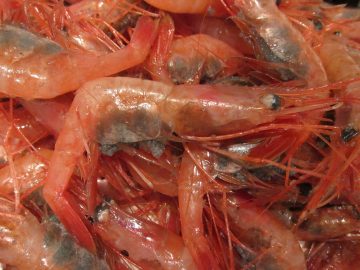 Meeting in Portland at the end of August, the Atlantic States Marine Fisheries Commission’s Northern Shrimp Section selected several final measures for inclusion in the latest revision to the Fishery Management Plan for northern shrimp. Known as “Amendment 3,” the latest version of the plan will bring about a number of significant changes to the way the fishery is managed — if indeed the northern shrimp fishery is ever resuscitated. Because fisheries scientists believed that the northern shrimp population had collapsed, commercial shrimp fishing on the Gulf of Maine has been banned since 2014 with only an extremely limited harvest for scientific data collection purposes permitted. click here to read the story 08:52
Meeting in Portland at the end of August, the Atlantic States Marine Fisheries Commission’s Northern Shrimp Section selected several final measures for inclusion in the latest revision to the Fishery Management Plan for northern shrimp. Known as “Amendment 3,” the latest version of the plan will bring about a number of significant changes to the way the fishery is managed — if indeed the northern shrimp fishery is ever resuscitated. Because fisheries scientists believed that the northern shrimp population had collapsed, commercial shrimp fishing on the Gulf of Maine has been banned since 2014 with only an extremely limited harvest for scientific data collection purposes permitted. click here to read the story 08:52
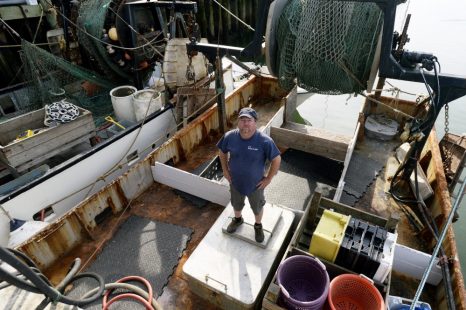
Maine fishermen, scientists combine forces with goal to save shrimp fishery
For more than 20 years, Dana Hammond made close to half his annual income shrimping. But his shrimping profits began to dwindle in 2013. That season, regulators were alarmed by the lack of shrimp biomass in the Gulf of Maine, and the amount he was allowed to catch was cut 72 percent. The fishery was closed entirely in 2014. It hasn’t reopened since and Hammond, who fishes out of Portland on his boat the Nicole Leigh, has been trying to make up the deficit from his other main source of income, groundfishing. But Hammond isn’t ready to let shrimping go. click here to read the story 09:22
Shrinking northern shrimp catch sparks worry for one of Eastern Canada’s most important fisheries
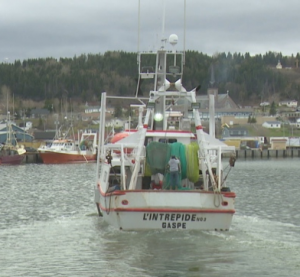 The northern shrimp population in the Gulf of St. Lawrence has dropped by 50 per cent in the past 10 years, according to Fisheries and Oceans Canada. Commercial fishermen brought in roughly 30 per cent fewer shrimp between 2015 and 2016. While the exact portrait of what is happening with shrimp stocks may be complex, the warming temperatures of the Gulf of St. Lawrence have been fingered as a potential problem for northern shrimp, a cold-water-loving shrimp species found in the northwest Atlantic. Another factor is the increasing number of redfish, also known as the ocean perch, a species that prefers warmer temperatures. Redfish compete with the shrimp for food when they are young, and feed on them when they are older. click here to read the story 11:08
The northern shrimp population in the Gulf of St. Lawrence has dropped by 50 per cent in the past 10 years, according to Fisheries and Oceans Canada. Commercial fishermen brought in roughly 30 per cent fewer shrimp between 2015 and 2016. While the exact portrait of what is happening with shrimp stocks may be complex, the warming temperatures of the Gulf of St. Lawrence have been fingered as a potential problem for northern shrimp, a cold-water-loving shrimp species found in the northwest Atlantic. Another factor is the increasing number of redfish, also known as the ocean perch, a species that prefers warmer temperatures. Redfish compete with the shrimp for food when they are young, and feed on them when they are older. click here to read the story 11:08
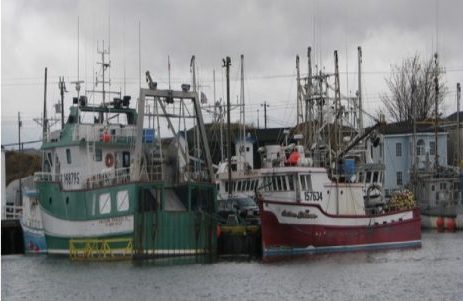
Northern Shrimp quota slashed – Who will get the remaining shrimp quota? Who gets to financially survive?
The fights were starting to brew on Friday, as word spread of cuts to northern shrimp quota for 2017. Lean times in the Newfoundland and Labrador fishery are turning to desperate times. In response to declining shrimp numbers in areas off the province’s coast, the federal government has slashed quotas, with the result an expected wave of job losses. Shellfish shock is hitting the province. Shrimp is not the only consideration, with largely ecological factors including warming temperatures and a return of groundfish numbers also driving down crab counts (the province’s other big cash crop). Click here to read the article 10:50
Plan to reopen Maine shrimp fishery in the works
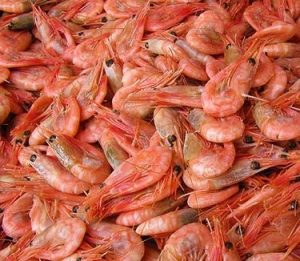 The Atlantic States Marine Fisheries Commission is seeking comment on its plan to reopen the northern shrimp fishery, which has been closed for three years. The Arlington, Va.-based regulatory agency’s plan includes options such as changing the way the quota system is managed. The agency noted that earlier proposals had considered establishing a limited entry program. The current proposal eliminates that option and focuses instead on “total allowable catch allocation programs, gear requirements, and other measures to improve management of the northern shrimp fishery and resource.” continue reading the story click here 21:14
The Atlantic States Marine Fisheries Commission is seeking comment on its plan to reopen the northern shrimp fishery, which has been closed for three years. The Arlington, Va.-based regulatory agency’s plan includes options such as changing the way the quota system is managed. The agency noted that earlier proposals had considered establishing a limited entry program. The current proposal eliminates that option and focuses instead on “total allowable catch allocation programs, gear requirements, and other measures to improve management of the northern shrimp fishery and resource.” continue reading the story click here 21:14
FISH-NL calls on Ottawa to reserve northern shrimp quota for inshore fleet in light of expected dramatic cuts
 The Federation of Independent Sea Harvesters of Newfoundland and Labrador (FISH-NL) is calling for an immediate halt to the fishing of northern shrimp by factory-freezer offshore trawlers in waters off Newfoundland’s northeast coast and southern Labrador until stocks rebound. “Priority must be given to the inshore harvesters of Newfoundland and Labrador — the economic pillars of our rural communities adjacent to the northern shrimp resource,” says Ryan Cleary, President of FISH-NL. “The inshore fleet is totally reliant on SFA 6.” continue reading the press release here 08:46
The Federation of Independent Sea Harvesters of Newfoundland and Labrador (FISH-NL) is calling for an immediate halt to the fishing of northern shrimp by factory-freezer offshore trawlers in waters off Newfoundland’s northeast coast and southern Labrador until stocks rebound. “Priority must be given to the inshore harvesters of Newfoundland and Labrador — the economic pillars of our rural communities adjacent to the northern shrimp resource,” says Ryan Cleary, President of FISH-NL. “The inshore fleet is totally reliant on SFA 6.” continue reading the press release here 08:46
Shrimp fishermen facing catch crisis
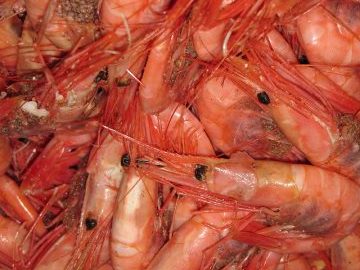 Shrimp fishermen in parts of northern Norway are reporting their worst winter ever, with catches down by between 50 and 75 per cent. Some say that if the situation continues they may be forced to sell their vessels and turn to something new. It is not just Norway which has problems. Some areas on the north east coast of Canada are also reporting a sharp decline in shrimp stocks. One prawn fisherman Lynne Prudence Sjåvik , based in Helgeand region, told the northern office of the state broadcaster NRK that for every year that passes the situation just seems to he get worse. Read the rest of the story here 11:25
Shrimp fishermen in parts of northern Norway are reporting their worst winter ever, with catches down by between 50 and 75 per cent. Some say that if the situation continues they may be forced to sell their vessels and turn to something new. It is not just Norway which has problems. Some areas on the north east coast of Canada are also reporting a sharp decline in shrimp stocks. One prawn fisherman Lynne Prudence Sjåvik , based in Helgeand region, told the northern office of the state broadcaster NRK that for every year that passes the situation just seems to he get worse. Read the rest of the story here 11:25
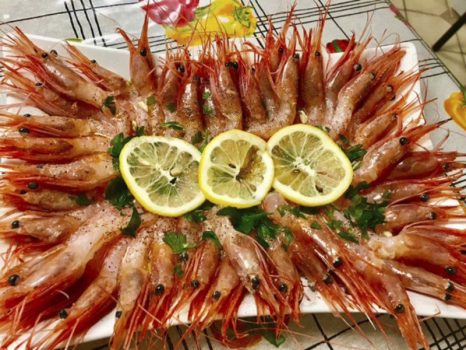
Northern Shrimp lovers lining up for local catch
Joe Jurek knew his catch would be popular. He just didn’t know how popular. Jurek, a Gloucester-based groundfisherman who specializes in yellow-tail flounder on most fishing days, now holds the rarified position as the only Massachusetts fisherman allowed to fish for northern shrimp in the Gulf of Maine. His tenure as shrimper-in-residence will last only two more weeks, much to the dismay of local northern shrimp lovers — including Mayor Sefatia Romeo Theken — who literally have trooped down to the dock with buckets to try to buy the cold-water delicacies. The local shrimp have disappeared from seafood retail shops in the last four years the shrimp fishery has been closed. “Once people found out about it, it was like a bunch of seagulls,” said Romeo Theken, who along with a couple other dozen friends put in an order for about 230 pounds of the small, sweet shrimp. “Now people know the process, that they have to sign in at the auction and buy it through a seafood dealer.” Jurek said he’s averaging 350 to 400 pounds of the shrimp per fishing day, which he lands at the Cape Ann Seafood Exchange at an average off-the-boat price of about $6.50 a pound. continue reading the story here 07:28
Northern shrimp stocks still ‘critical’ – no improvement in spawning biomass
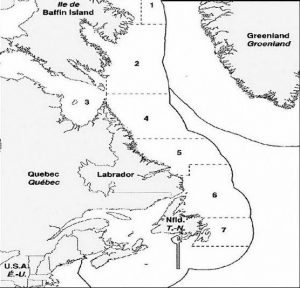 It’s the season to talk about the prospects for the shrimp fishery in Newfoundland and Labrador and the initial information for the new season does not look promising. In a media briefing this morning, Katherine Kanes, mathematician/stock-assessment biologist with Department of Fisheries and Oceans (DFO) outlined the current picture from the most recent stock assessments, for northern shrimp in fishing areas 6, 5 and 4 — off the Northern Peninsula and the coast of Labrador. Data collected from the fall multi-species trawl survey by DFO, as well as information from fishers shows there’s not been much improvement from last year. In SFA 6 — the area that most inshore commercial fishers from this province depend on for their shrimp catches — the biomass of female shrimp is still in the critical zone, she said. Continue reading the story here 09:26
It’s the season to talk about the prospects for the shrimp fishery in Newfoundland and Labrador and the initial information for the new season does not look promising. In a media briefing this morning, Katherine Kanes, mathematician/stock-assessment biologist with Department of Fisheries and Oceans (DFO) outlined the current picture from the most recent stock assessments, for northern shrimp in fishing areas 6, 5 and 4 — off the Northern Peninsula and the coast of Labrador. Data collected from the fall multi-species trawl survey by DFO, as well as information from fishers shows there’s not been much improvement from last year. In SFA 6 — the area that most inshore commercial fishers from this province depend on for their shrimp catches — the biomass of female shrimp is still in the critical zone, she said. Continue reading the story here 09:26
Gloucester fisherman chosen for Gulf of Maine northern shrimp research project
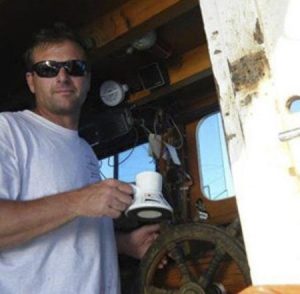 Joe Jurek is no stranger to the Gulf of Maine northern shrimp fishery, having incorporated shrimping into his annual fishing calendar even after moving to Gloucester about a decade ago to groundfish. “When sectors started in 2009, we would catch our groundfish quota as quickly as we could and then go fish the other fisheries, including the northern shrimp fishery,” Jurek said Tuesday. “I shrimped long before that, though. You could say it’s kind of my background.” Jurek, owner and skipper of the 42-foot F/V Mystique Lady, will be the lone Massachusetts representative in the upcoming Gulf of Maine winter shrimp sampling program that will produce the only legal shrimping in 2017 in the Gulf of Maine. The Mystique Lady is one of 10 trawlers participating in the sampling program, along with eight from Maine and one from New Hampshire captained by Mike Anderson of Rye. Read the story here 09:56
Joe Jurek is no stranger to the Gulf of Maine northern shrimp fishery, having incorporated shrimping into his annual fishing calendar even after moving to Gloucester about a decade ago to groundfish. “When sectors started in 2009, we would catch our groundfish quota as quickly as we could and then go fish the other fisheries, including the northern shrimp fishery,” Jurek said Tuesday. “I shrimped long before that, though. You could say it’s kind of my background.” Jurek, owner and skipper of the 42-foot F/V Mystique Lady, will be the lone Massachusetts representative in the upcoming Gulf of Maine winter shrimp sampling program that will produce the only legal shrimping in 2017 in the Gulf of Maine. The Mystique Lady is one of 10 trawlers participating in the sampling program, along with eight from Maine and one from New Hampshire captained by Mike Anderson of Rye. Read the story here 09:56
Participants in cooperative winter sampling program for Gulf of Maine northern shrimp announced
 The program, coordinated by the Maine Department of Marine Resources, New Hampshire Fish and Game Department, and Massachusetts Division of Marine Fisheries, is designed to provide biological data on the shrimp fishery which is closed for the fourth year in a row. These Maine fishermen were chosen from over 60 applicants based on a random drawing of those fully qualified in each region. Preference was given to trawlers willing to participate in a test of a compound grate for harvesting. The sampling program will include the participation of 10 trawlers (eight Maine trawlers, one Massachusetts trawler and one New Hampshire trawler) and five Maine trappers fishing for eight weeks from mid-January to mid-March. Read the story here 08:15
The program, coordinated by the Maine Department of Marine Resources, New Hampshire Fish and Game Department, and Massachusetts Division of Marine Fisheries, is designed to provide biological data on the shrimp fishery which is closed for the fourth year in a row. These Maine fishermen were chosen from over 60 applicants based on a random drawing of those fully qualified in each region. Preference was given to trawlers willing to participate in a test of a compound grate for harvesting. The sampling program will include the participation of 10 trawlers (eight Maine trawlers, one Massachusetts trawler and one New Hampshire trawler) and five Maine trappers fishing for eight weeks from mid-January to mid-March. Read the story here 08:15
Utilizing sound technology, scientists assess northern shrimp population along the Maine Coast
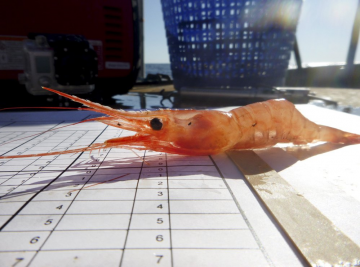 This winter, a small fleet of Maine fishermen will head out to hunt for northern shrimp, even though the fishery itself has been closed for three years. They won’t be landing the New England delicacy so it can be eaten. The fishermen will use acoustic transducers, and a few nets and traps, to help the Gulf of Maine Research Institute learn where these small pink crustaceans congregate in our near-shore waters over the winter, where they lay their eggs. Using sound waves to survey a species as small as shrimp is a new challenge for scientists. “We have found low-frequency sound waves are good at detecting big fish, like cod, and high frequencies are good at detecting small organisms like shrimp,” said research associate Adam Baukus of GMRI. “The technology allows us to cover a lot more of the ocean than we can with trawls or traps alone. With sound, we can do 40 miles at a time. … Traditional (trawl) surveys are lucky to cover a quarter mile.” Read the story here 11:34
This winter, a small fleet of Maine fishermen will head out to hunt for northern shrimp, even though the fishery itself has been closed for three years. They won’t be landing the New England delicacy so it can be eaten. The fishermen will use acoustic transducers, and a few nets and traps, to help the Gulf of Maine Research Institute learn where these small pink crustaceans congregate in our near-shore waters over the winter, where they lay their eggs. Using sound waves to survey a species as small as shrimp is a new challenge for scientists. “We have found low-frequency sound waves are good at detecting big fish, like cod, and high frequencies are good at detecting small organisms like shrimp,” said research associate Adam Baukus of GMRI. “The technology allows us to cover a lot more of the ocean than we can with trawls or traps alone. With sound, we can do 40 miles at a time. … Traditional (trawl) surveys are lucky to cover a quarter mile.” Read the story here 11:34
A shrimp apocalypse? Anything is possible, says DFO scientist
 A scientist with the Department of Fisheries and Oceans is defending its bleak assessment of shrimp stocks off Newfoundland’s northeast coast and Labrador, and is blaming the resurgent codfish – which feed on shrimp – as a “driving factor.” Katherine Skanes is also firing back at those questioning the status of the stock. “When the biomass was going up, they had confidence in our survey. Then when the biomass goes down, they lose confidence,” she said. Jaws dropped this past spring after DFO’s annual northern shrimp assessment revealed that the “fishable” biomass in Area 6 had declined by a staggering 41 per cent between 2014 and 2015. DFO blames environmental conditions and predation for the decline. Read the story here 10:46
A scientist with the Department of Fisheries and Oceans is defending its bleak assessment of shrimp stocks off Newfoundland’s northeast coast and Labrador, and is blaming the resurgent codfish – which feed on shrimp – as a “driving factor.” Katherine Skanes is also firing back at those questioning the status of the stock. “When the biomass was going up, they had confidence in our survey. Then when the biomass goes down, they lose confidence,” she said. Jaws dropped this past spring after DFO’s annual northern shrimp assessment revealed that the “fishable” biomass in Area 6 had declined by a staggering 41 per cent between 2014 and 2015. DFO blames environmental conditions and predation for the decline. Read the story here 10:46
Reactions to Northern Shrimp quota cut- ‘Mixed emotions’ and a ‘devastating effect’
 FFAW Union President Keith Sullivan and Fisheries and Aquaculture Minister Steve Crocker spoke out Friday on the federal fisheries department’s decision to cut 42 per cent of the shrimp quota off Area 6. “The immediate effect for inshore enterprises and plants and communities, it’s around 25-million pounds and a rough estimate dollar wise, it’s possibly in the $70-million dollar range,” said Sullivan. “So it’s going to be absolutely devastating for our communities and harvesters, and certainly the communities that depend on that.” While the cut in quota is disappointing, there is some relief being felt that the controversial Last In, First Out (LIFO) policy has lifted. Read the rest here 17:25
FFAW Union President Keith Sullivan and Fisheries and Aquaculture Minister Steve Crocker spoke out Friday on the federal fisheries department’s decision to cut 42 per cent of the shrimp quota off Area 6. “The immediate effect for inshore enterprises and plants and communities, it’s around 25-million pounds and a rough estimate dollar wise, it’s possibly in the $70-million dollar range,” said Sullivan. “So it’s going to be absolutely devastating for our communities and harvesters, and certainly the communities that depend on that.” While the cut in quota is disappointing, there is some relief being felt that the controversial Last In, First Out (LIFO) policy has lifted. Read the rest here 17:25
‘We’ve won the battle, but not the war’: Inshore gets 70% of reduced shrimp quota
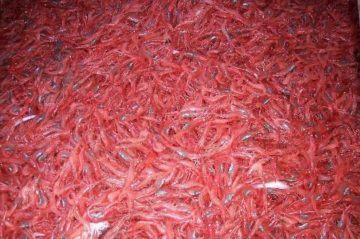 The federal fisheries department is allocating less shrimp off Newfoundland’s northeast coast and southern Labrador, in a decision that is poised to cause trouble for on an industry that is a lifeblood for many fishing communities. According to a document from the Department of Fisheries and Oceans, the total allowable catch for the 2016-2017 season in Area 6 will be 27,825 tons, a 42 per cent reduction from last year’s quota. Area 6 is a fishing zone that covers waters off the coasts of southern Labrador and northern Newfoundland. The last-in, first-out (LIFO) policy is also being abolished and replaced with a proportional sharing arrangement. Inshore vessel operators will be given about 70 per cent of the quota, while offshore trawlers will receive around 23 per cent. Read the rest here Northern shrimp fishery sees quotas cut, offshore to get 23% of catch Click here 08:36
The federal fisheries department is allocating less shrimp off Newfoundland’s northeast coast and southern Labrador, in a decision that is poised to cause trouble for on an industry that is a lifeblood for many fishing communities. According to a document from the Department of Fisheries and Oceans, the total allowable catch for the 2016-2017 season in Area 6 will be 27,825 tons, a 42 per cent reduction from last year’s quota. Area 6 is a fishing zone that covers waters off the coasts of southern Labrador and northern Newfoundland. The last-in, first-out (LIFO) policy is also being abolished and replaced with a proportional sharing arrangement. Inshore vessel operators will be given about 70 per cent of the quota, while offshore trawlers will receive around 23 per cent. Read the rest here Northern shrimp fishery sees quotas cut, offshore to get 23% of catch Click here 08:36
Last In First Out policy ‘descriminates against Nunavut,’ says Nunavut Senator Dennis Patterson
 Nunavut Senator Dennis Patterson is standing up for his territory’s shrimping industry. On Friday Patterson called on federal fisheries and oceans minister Dominic LeBlanc to consider Nunavut’s position when reviewing changes to the Northern shrimp quotas. Northern shrimp stocks dropped dramatically in 2014 and 2015, so it’s expected the quotas are going to be cut. Under the federal government’s “last in first out” (LIFO) policy, Nunavut would bear the brunt of the cuts because the territory’s fishing companies are the newest to have been given licences. Other fishing companies in the Atlantic provinces were operational well before Nunavut was even established in 1999. Therefore, Patterson says, the LIFO policy favours those companies and “discriminates against Nunavut.” Read the rest here 09:18
Nunavut Senator Dennis Patterson is standing up for his territory’s shrimping industry. On Friday Patterson called on federal fisheries and oceans minister Dominic LeBlanc to consider Nunavut’s position when reviewing changes to the Northern shrimp quotas. Northern shrimp stocks dropped dramatically in 2014 and 2015, so it’s expected the quotas are going to be cut. Under the federal government’s “last in first out” (LIFO) policy, Nunavut would bear the brunt of the cuts because the territory’s fishing companies are the newest to have been given licences. Other fishing companies in the Atlantic provinces were operational well before Nunavut was even established in 1999. Therefore, Patterson says, the LIFO policy favours those companies and “discriminates against Nunavut.” Read the rest here 09:18






































